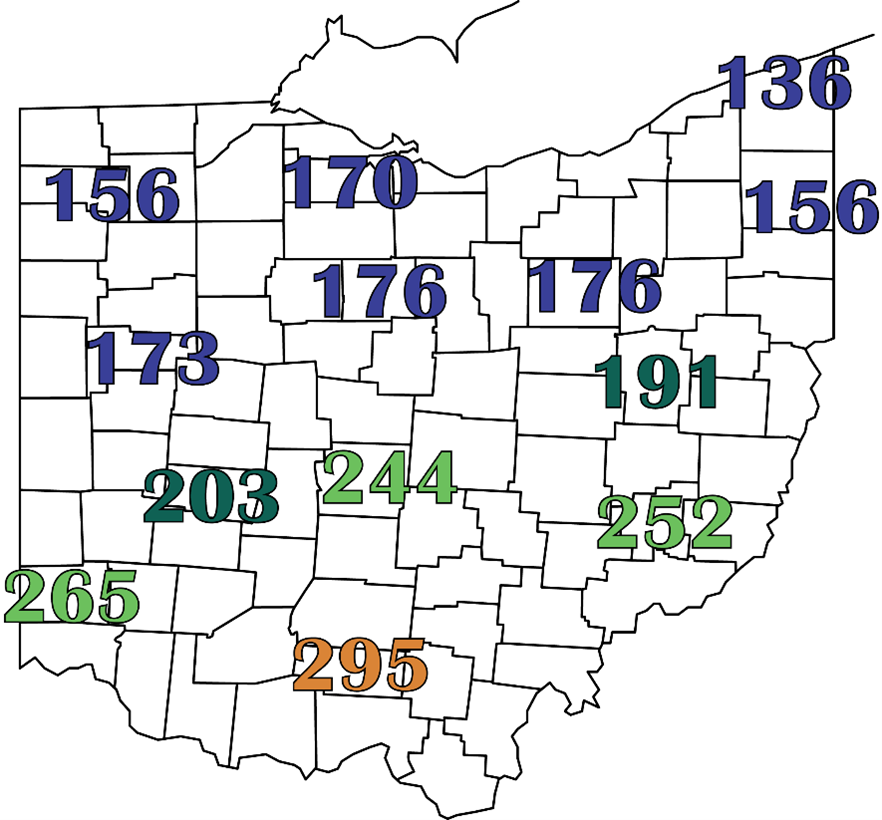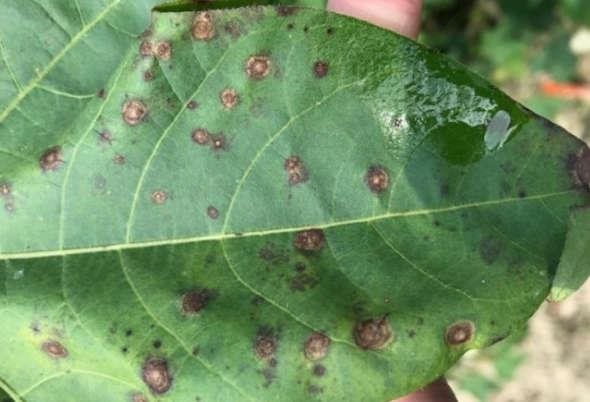By Kyle Verhoff and Jason Hartschuh et.al
Despite the chill in the air, overall rising spring temperatures are beginning to bring activity back to our fields. The good news is that we get to scratch that itch and get more active in the field; the bad news is that our pests get to be more active, too. Alfalfa weevils are one of the two key alfalfa pests in Ohio. By utilizing growing degree days (GDD) and simple scouting methods, we can estimate weevil activity and minimize the potential damage to our first cuttings of alfalfa. Alfalfa weevil adults (and some eggs) overwinter in Ohio and increase in activity when temperatures exceed 48°F. Since alfalfa weevil overwinters, older alfalfa stands are more likely to be affected since previous populations of alfalfa weevil have had the opportunity to establish and overwinter nearby. The larval forms of alfalfa weevil are more damaging than mature weevils since larval feeding on foliar tissue causes the most damage to the alfalfa stand. As GDDs accumulate, the larvae continue to grow and are most damaging at the later larval stages (3rd and 4th instars). Peak larval activity and feeding damage are at their highest when heat units for the area are between 325 and 575 (accumulation from a base of starting at 48°F January 1st). As of writing this (Jan. 1 – April 5), heat units range from 136 in northeast Ohio to 295 in south central Ohio. We are at or slightly ahead of this time last year with a very warm March making up for a cold January and February (Figure 1).

Figure 1. Map of accumulated growing degree days (base 48°F sine calculation method) for January 1 – April 5, 2025 at CFAES Ag Weather stations across the state (https://weather.cfaes.osu.edu//) and additional NOAA stations around Ohio (Midwestern Regional Climate Center (https://www.mrcc.purdue.edu)).
Alfalfa weevil larvae can be identified by their wrinkled green body, black head capsule, and the presence of a white strip that runs lengthwise along their back (Figure 2). Third and fourth instar larvae will be approximately ¼ inch long, while the younger first and second instars will be smaller in size.

Figure 2. Alfalfa leaf with pinhole feeding damage, green alfalfa weevil larvae in different development stages (instars), and brown adults. Photo Credit – Julie Peterson, University of Nebraska
The initial step of scouting is assessing the level of tip feeding in a given field. Alfalfa weevil feeding starts as small pinhole feeding and is concentrated on the growing tip of the plant. Damage from heavy or prolonged infestations can result in more skeletonized leaflets that, from a distance, give the affected area a frosty appearance.
The second step is to take stem samples and estimate the alfalfa weevil population. To scout for alfalfa weevil, collect 10 stem samples randomly from various areas of the field. Be sure to pick or cut the stem samples off at ground level and place them upside down in a bucket. Vigorously shake the samples in the bucket. Shaking will knock loose the larger, more developed larvae. Once shaken, inspect the tips of each sample for early-stage larvae. Count the larvae found on the sample tips and in the bucket.
The final step is to assess if you need to implement a control. Taller alfalfa can handle greater alfalfa weevil pressure than a shorter alfalfa stand can. The height and maturity of the alfalfa stand will help determine if a pesticide application is an economically sound decision. Once the average stand height is recorded, reference the table below to compare the number of larvae found per stem sampled and the overall height of the alfalfa stand to make a management decision
Table 1. Alfalfa weevil scouting recommendation table.

A video about scouting alfalfa weevils can be found here.
If action thresholds are met to warrant a spray treatment, the OSU and MSU “Field Crops Insect Pest Management Guide” is a great resource and can be found here: https://aginsects.osu.edu/extension-publications/msuosu-ipm-guide. It is important to note that there have been confirmed cases of pyrethroid-resistant alfalfa weevil populations in a few western states. To combat resistance, rotate the insecticides used and scout after spraying to note any ineffective applications. Prior to spraying, always re-read the product label to reconfirm application rates, pre-harvest intervals, and other key pieces of information.
If the alfalfa weevil pressure and stand height justify an early harvest, be sure to check the regrowth one week after cutting. This will ensure that the remaining alfalfa weevil does not persist into the second cutting to prevent strong regrowth.
More information about alfalfa weevils can be found on the alfalfa factsheet here: https://ohioline.osu.edu/factsheet/ENT-32. More information about sampling and the management thresholds from the University of Kentucky is here: https://entomology.ca.uky.edu/ef127.
Source : osu.edu